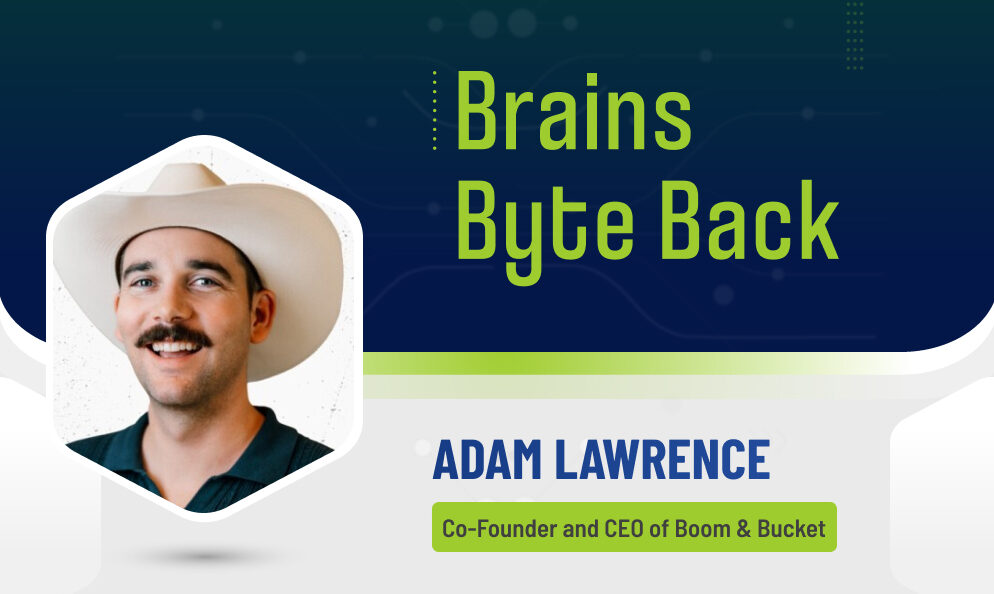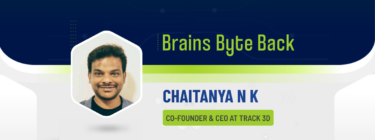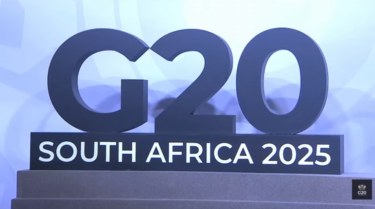In today’s episode of the Brains Byte Back podcast, we speak with Adam Lawrence, Co-Founder and CEO of Boom & Bucket, a trusted digital dealer for buying and selling used heavy equipment.
In this episode, Lawrence kicks off by sharing how Boom & Bucket is the largest website for buying and selling used construction equipment online, ranging from tractors to bulldozers to cranes.
He then details how the company got started, when the two co-founders, Aaron and Samir, sold a company to Caterpillar in 2017 and stayed on to help with Cat Digital Labs, the innovation department of Caterpillar.
During this time, Lawrence was running a large payments business which he left in 2020. Lawrence and Samir met, and with Lawrence’s desire to stay in e-commerce, and Samir’s insights on using data to better understand the quality of the equipment being sold, the founding team started working on Boom & Bucket.
Despite the company having only been around for two years, Lawrence shares that they have achieved a lot in this short space of time. He highlights this by pointing out that they have raised a venture round in 2021 and built a team that includes a head of operations and a head of engineering. Boom & Bucket officially launched in February 2022 and since then has become one of the fastest-growing companies of its type.
Lawrence also shares the backstory behind the name “Boom & Bucket,” which Lawrence advocates was chosen from a list of 50 names. The alliteration, as well as the fact that both a boom and a bucket are components of the construction equipment being sold, made it a winning name.
Lawrence claims that they set out to build an iconic logo and brand around the name, with a red, white, and blue color scheme and a simple line drawing of an excavator that evokes movement. He explains that the goal was to build an Americana brand that would still resonate 50 years from now.
You can listen to the episode below, or on Spotify, Anchor, Apple Podcasts, Breaker, Google Podcasts, Stitcher, Overcast, Listen Notes, PodBean, and Radio Public.
Alternatively, you can find a transcript below:
Adam Lawrence: Adam Lawrence founder and CEO, Boom & Bucket. What we do, we are the largest website for buying and selling used construction equipment online. So everything from a tractor to a bulldozer to cranes, you can buy it online and get it delivered to you’re place of business, a few days later.
Samuel Brake Guia: Fantastic. I love how simple that is. You know we’re tech podcast so sometimes people come on and it’s like they break it down further, but they’re using all this jargon. I think that is one of the simplest most straightforward explanations I ha’ve had on the show so I appreciate it. I’m sure our listeners do too and I also want to know like when and how did Boom & Bucket first start?
Adam Lawrence: We’ve been at it kind of two years as a founding team. The kind of backgrounds of how we got here. I think goes over the course over a decade plus. Two co-founders, Aaron and Samir, they sold a company to Caterpillar in 2017. So like the big yellow machine company that you see and then they stayed and helped during Cat Digital Labs, which is the Innovation Department of Caterpillar for a few years. I was running a very large payments business, like an e-commerce, paid business and I left in 2020. I met Samir and I had this idea that I want to stay in e-commerce or market places. I wanted to be in a big market. I want to be in a market where you could do the sale and the financing and the shipping and the logistics and things around the sale in order to get a great customer experience. And Samir had insights on how to do that online. By leveraging data to better represent, kind of the condition and quality of these things that we sell. So we started working on it late 2020, In early 21, we convinced a crazy person to give us some equipment to sell, you know just like two dudes who are cold calling at that time.
Adam Lawrence: And I mean, actually cold calling as it was in the a middle COVID in California. So we couldn’t really knock on doors as much as we would have liked. We incorporated the company in April of 21. So basically two years ago only because some crazy person was like willing to buy a piece of equipment from a site unseen, ship it halfway across the country and we needed a bank account to take the payment and raise a little money after that. So we raised a venture around in 21 and started building the team towards the end of that year. And so you know, three co-founders hired, a great head of ops ahead of engineering, and started building around them. We launched in February of last year. So we’ve been in the market for like a year with what you see today, which is BooneandBucket.com and you know, we are probably the fastest growing company of our type and not just online. But you know, the numbers that we’re beginning to hit in our first year, would make us a pretty large regional player in terms of equipment, dealer equipment broker.
Samuel Brake Guia: Awesome, fantastic. Well, that’s so incredible to hear that you have come so far in two years. I mean that’s really outstanding. And I have to say, I love the fact that you emphasis a crazy person being really at the core of your startup story. And I have to say, I’m pretty sure that every kind of startup story must at some point, have some kind of crazy person in it.
Adam Lawrence: There’s one crazy person that’s got to believe in you, right? Everybody has seen the video of the person dancing at the gorge, like, by themselves at a concert and they’re the initial one that’s crazy. And then they get a crowd of people to dance around them. Now, it’s a movement. And so, you know, that first person sparks a movement, and the first customer is so important.
Samuel Brake Guia: I’m so glad you brought that video up because I think that perfectly highlights it and I really want to know, Boom & Bucket. What’s the story behind that name? Because it sounds like a TV show or a movie about like two characters or something like that. How did you come up with that?
Adam Lawrence: So we had a list of probably 50 things that we thought about calling the company and if you go and look in the space, like all the websites are kind of yellow and black. There’s a lot of like faux steel on the websites or there’s a lot of like first name, last name equipment company, you know, Todd Smith equipment company, nothing against Todd Smith. But we wanted something that, to your point, could stand out a little bit, like the literation, and then a boom is a component of the machine, as is the bucket. And so, you know, it works for our space. But really, we want something that we felt like you can build an iconic logo and brand around. And so, you know, the name is one thing, the color schemes, another, it’s red, white, and blue, the marks and other. It’s a simple line drawing of an excavator that evokes movement. We thought we wanted to build a kind of Americana brand something that if you saw the name and the logo 50 years from now, would still resonate. And so that was a goal in terms of naming for the design of the initial mark.
Samuel Brake Guia: Awesome. Well, I do love the alliteration is very fun to say, and on a completely, separate note. I really enjoy having startups on that are having a real impact in the world and especially when it comes to sustainability. And I know that you folks do play a role in that. So I really want to pose the question to you, how can you using secondhand heavy, machinery contribute to reducing carbon footprint and waste in the construction industry?
Adam Lawrence: So the really interesting thing about these machines. That they’re huge and they get reused and recycled in ways that you would never imagine. So one of those very large, bulldozers or very large earth scrapers you can see it’s like the ones that are moving mountains. Everything on that except their frame is a consumable. And so at 10 or 12,000 hours the engine would get replaced and it would get upgraded to the most modern emission standards and then that would happen again and maybe again over the course of the machine. And so, yeah, there are really interesting articles that you see of some of these very large bulldozers are produced in the late, 70s and early 80s, still being used today and having a hundred thousand hours on the frame but having gone through, you know, seven or eight engines. And so we are an important part of that economy in a sense that we help people find and reuse those things as opposed to you know, buying something that uses incredible amount of resources. So we’d like to think that we’re helping there, I would say we’re not characterized as a green company. We don’t overtly tell people that were something that we’re not like we help people buy used equipment to run and push their businesses forward. But there’s a very nice component in terms of the recycling and reuse of it.
Samuel Brake Guia: I can see how it plays a role, even if that, maybe isn’t your driving intention and to be quite honest, It’s quite interesting because I had a guest on recently that was CEMEX Venture they are called and they focus on innovation in the construction industry and it’s really just become so apparent to me how important the construction industry is, within these conversations in the sense that right now we’re facing such a tough housing crisis or at least certainly I can speak for the UK and yeah, I suppose the only thing I want to say on that is like it really rings home. Like now more than ever we need to be smarter. I suppose be more prepared or just more innovative when it comes to the construction industry. But you probably know more about that than I do. I’m literally coming into this as a novice.
Adam Lawrence: I think it’s true. We think about that a lot that the traditional notion of thinking about the construction industry, we think about, unskilled, laborers, doing things. That’s not the way that it is in any case, the most successful construction companies are masters in mitigating and understanding risk, to seek out a profit margin and it’s a thin profit margin, but it’s on a high dollar amount. And so, somebody like us has a huge amount of data about machine conditioning. So the, you know, isn’t in good conditioner is not good. The condition means that they can eke out a few extra percentage points. Likewise, we know you know the intricacies of seasonality when to sell and when to buy equipment, we know the fair market price for everything, we’re experts in terms of financing it. And so we think that we really help power this incredibly important part of the global economy and that’s on the macro center the microsense. You know, there’s a ton of fun stories that we have about Mom and Papa operators, buying a single machine and that single machine provides, you know, income for their families and their labors, and their teams. Because these things, at the end of the day, they really help them money and money is the lifeblood of how people survive in the economy. And so, you know, we help people down that journey quite a bit and so it’s fun to see at both a very large scale on the micro scale.
Samuel Brake Guia: Yeah, I can imagine that’s very rewarding definitely and I also want to say like you have seen so much success and it is clear that you’re doing great things in this space and I want to know like are there other companies operating this space? And if so, like how do you differentiate yourself from the competition?
Adam Lawrence: Are there any other companies operating in this space? Yeah, there’s a ton. Our space is 300 billion dollars of used industrial assets get traded every single year across the world. The biggest player has a two percent market share. and so there’s a huge number of people in here and you know, it ranges from when you drive outside of a major city in the US you know you’re driving outside of Dallas, you’ll see, you know, probably 20 user equipment lots. And it’s usually, you know, Todd Smith, Mike Brown used equipment, you know, something like that, and they’re at subscale, you know, they don’t have the access to data to under the conditioning. It’s all look, feel, and touch. The reputation for a lot of those places isn’t great because they rarely interact with the same buyer again. So we do have competition but not in the same way that I think it is an infinite game. I want you Samuel to buy for me this time. Next time. The time after the 10th time, the 20th time that you need equipment over the course of your career. And I think that’s just a very different way of looking at this industry than most people do. Most people used to go in a dirt field. Looking at a piece of equipment that piece of equipment next to something that’s in worse condition. Something that’s in better condition and then they do an auction oftentimes in that same dirt field, everything sold as is, where you have to get your own shipping. You have to scale your own financing. And so it’s not a user-friendly environment. The way that we think about this is I wanted to be a lot more consumer shopping like you. I may be going and looking for a car online or a house during Covid. Rather than an old school auction in dirt field.
Samuel Brake Guia: That makes absolute sense. And I love the fact that he brought up the infinite game there. That’s something. To me. Anyway, I think is so vital for any kind of company to understand and then survive in today’s modern environment. So I can understand that maybe, that does contribute something to the success that you’ve seen so far. And I want to know, speaking of the success you’ve seen so far, like, what’s next on the horizon for you folks there at Boom & Bucket?
Adam Lawrence: What’s next? So we’re doing tens of millions of sales. We want to get to hundreds of millions of sales and we’ll do that by going nationwide. And so, our supply side is regional right now. So we have amazing, we call them fleet advisors working in territories to help large construction companies, and rental companies, sell their equipment on our platform. We want to scale that program across the nation.
Samuel Brake Guia: Awesome. Well, I hope anyone listening can get involved and help contribute towards that dream and if they do want to get involved, they want to either get in touch yourself Adam or keep up with Boom & Bucket. What’s the best way for them to do that?
Adam Lawrence: So we love talking to folks who are passionate about this industry. The easiest way to do that’s a good is the website, if there’s a career that works for you. Great! If you want to find me on Twitter or LinkedIn do the same thing on Twitter @im_asl. Those being my initials or on LinkedIn it’s Adam Lawrence on LinkedIn and any of those, like everybody has a brother or sister, an uncle or family member relative that works in construction or agriculture. If these things resonate with you, we want to talk to you about building, an amazing team and an amazing product.
Samuel Brake Guia: Excellent, fantastic. Well, we’ll include those links in the show notes but otherwise, Adam, thank you for joining me today and I wish you the best of luck with everything you’re doing. And it sounds like you’re really up to some great things.
Adam Lawrence: Of course, thank you Samuel. I appreciate it.
Disclosure: This episode includes a client of an Espacio portfolio company












